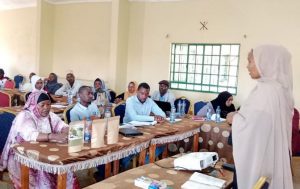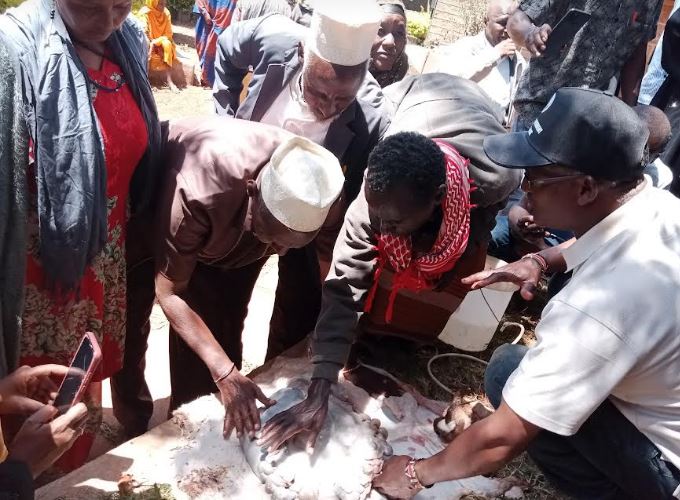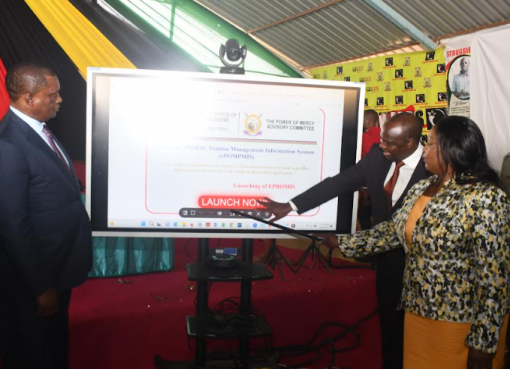Marsabit County government is firming up awareness on climate change to enable local communities to adopt and build resilience.
The indigenous weather ‘experts’ have also predicted that the existing peaceful coexistence among local communities will continue to prevail.
The Department of Agriculture held a scenario planning workshop for farmers and stakeholders Monday to strategize on the forecast El-Nino rains, in which traditional weather forecasters and the Kenya Meteorological Department (KMD) concurred that above-average rains would be received in the county.

The workshop held at the ACK St. Stephen’s Training Centre saw the participants treated to an eye-catching experience as the traditional weather forecasters slaughtered a goat and used the intestines to make predictions for the short rainy season.
The three predictors, two drawn from the Borana community and one from the Gabra community, analysed the intestines and gave results of enhanced and above-average rains similar to a report presented by the KMD.
“Most of the rain, which I can describe as potential and good enough to support food crops, will be received along the areas that border the Ethiopian highlands,” said Wario Qonchora from Maikona in North Horr constituency, adding that the adequate rain would also be spread to the lowlands.
As was the prediction of the other two overseers, locally known as Uchu, the analysis of the intestines showed that Marsabit County would continue to enjoy the restored lull and peace, an enabling environment for social and economic development.
They, however, asked the government to plan for an upsurge of biting insects, which could result in an outbreak of diseases like the deadly kalazar and malaria.
The Chief Officer for Food Security and Crop Development, Orge Barji, said her department has brought all stakeholders on board to enable farmers to maximise the expected good rains and boost food production.
Ms. Barji disclosed that the government has purchased 16.5 tonnes of assorted fast-maturing seeds to distribute to needy farmers across the county.
The seeds include maize, beans, sorghum, and pigeon peas, with the county government predicting a bumper harvest for this season as more pastoralists continue to diversify into crop farming after the prolonged drought wiped out 80 per cent of their livestock.
The county government has provided tractor services at a subsidised fee to enable local farmers to prepare their farms on time, a move which has seen the acreage under crop increase from 1,600 acres to 6,000 acres.
“We have deployed 8 tractors to the field, and another three are undergoing repairs to enhance the on-going farm mechanisation works,” the chief officer told the participants, adding that the procured seeds will be distributed at the start of next week.
She said that it was the desire of the government to have distributed the seeds a month ago, but there was a challenge with production at the Kenya Seed Company.
All stakeholders, including the Kenyan agricultural and livestock research organisation (Kalro), KMD, the National Drought Management Authority (NDMA), farmers, indigenous weather experts, the media, and technical government departments, were brought together to plan for farming activities and safety measures as regards the El-Nino rains.
Ms. Barji called on Marsabit residents to take advantage of the expected heavy and prolonged rains to plant trees, saying tree-growing was the most effective measure to mitigate climate change.
According to the Kenya Meteorological Department, there would be a good distribution of the October-November-December rains, with enhanced and above-average rainfall set to hit Moyale sub-county and parts of Marsabit Central.
The forum, supported by the Agriculture Sector Development Support Programme (ASDSP), observed that challenges, which include flooding not only of farmlands but of settlement areas, destruction of roads, blockage of drainage storms in urban centres, soil erosion, and an upsurge of water-related diseases, could be brought about by the El-Nino rains.
It advised collaborative planning and resource mobilisation in readiness for the predicted weather phenomenon in order to avert suffering and loss of lives.
By Sebastian Miriti




